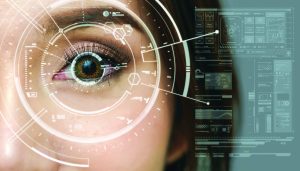
In 2003, the United Kingdom National Crime Agency launched an effort to crack down on child predators. Agency professionals commenced compiling a database of images and videos recovered from computer hard drives with the hope of identifying suspects.
Not surprisingly, the faces of the overwhelming majority of offenders were obscured, either partially or completely. In response, the agency consulted with a partner vendor to develop a new approach to biometrics that could help with the identification process.
“We were awarded a contract to capture images of child predators,” said Iain Drummond, the CEO of that vendor, which is now known as Face Forensics. “The faces of the offenders were not visible for obvious reasons. But maybe they were identifiable by their tattoos.”1
Drummond and his colleagues at Face Forensics, which is headquartered in Vancouver, British Columbia, Canada, redesigned their system to compile tattoo images and identify suspects accordingly. They also developed a way to digitally construct more complete images of faces from partially obscured originals.
Several years later, millions of images are in the database, known as ChildBase, including many that were enhanced through Face Forensics’ technology. Although hard data points are difficult to compile, Drummond notes that many child predators have been identified and apprehended as a result of ChildBase. The tattoo and partial face recognition capabilities created by Face Forensics are key parts of those apprehensions.
“It’s the work I’m most proud of,” Drummond said. “It’s what makes us different and it’s probably the best work I’ve done in my career.”
This example helps illustrate the game-changing power of biometrics. Whether it’s a sweeping effort like ChildBase or a routine traffic stop, biometrics, which in a law enforcement context is generally defined as using physiological characteristics to authenticate a given identity, has the ability to improve many areas of law enforcement.
In the Field
The obvious benefit of biometrics from a day-to-day perspective is that it can confirm the identity of an individual. That can be of great use for officers in the field, particularly as biometric tools become more mobile and accessible.
Case in point is the MX5-K9, created by Posh MFG, a manufacturer based in Surrey, British Columbia, Canada. At its core, the MX5-K9 line of products are combo devices designed to read driver’s licenses and similar documents for e-ticketing purposes. But each also has a biometric option in the form of a fingerprint reader. Each variation is designed to travel with the officer for identification of subjects in the field during traffic stops or similar scenarios.
“The K9 wasn’t designed for the purposes of going into a police vehicle,” said Posh MFG President Steve Gagnon. “We worked to come up with a portable device about the size of a box of matches. Mobile devices are the best fit for that kind of scenario. It doesn’t matter whether it’s your right or left hand. Your biometric is your biometric.”2
According to Gagnon, Posh MFG is now working with Crossmatch, based in Palm Beach Gardens, Florida, to blend the hardware of the MX5-K9 and other models with corresponding software created by Crossmatch.
Crossmatch has long been considered a global leader in biometric identity management and composite authentication for the law enforcement, health care, government, corporate, and other sectors.
“It’s the gold standard,” said John Hinmon, vice president of global marketing for Crossmatch. “We have ease of use, auto capture, and the quality of images, and there is matching high performance on the back end.”3
According to Hinmon, Crossmatch technology can streamline operations and save time for agencies and their officers. “What it comes down to is the speed and ease of performance,” Hinmon said. “We help make for an easy booking process, one that’s not bogged down by things like inadvertently submitting the wrong image. All of this translates into productivity and saves money.”

One of the more recent additions to the Crossmatch suite of law enforcement solutions is the Nomad 30 Pocket Reader, a line of fingerprint readers that were developed to be thin, lightweight, and easy for officers to carry and store. Each is FAP 30 PIV certified by the FBI, ensuring quality and accuracy of image capture.
“The Nomad range of products can help an officer to be more productive in the field, instead of bringing a suspect back to the department,” Hinmon said. “There are huge issues around conserving and consolidating manpower and this can help with that concern.”
The tool is specifically designed not to further encumber officers already carrying a high amount of hardware. “The last thing an officer needs is another thing that hangs off their duty belt,” Hinmon said. “It’s really all about mobility. If we can avoid leaving the scene it saves hours out of someone’s day. If you have probable cause you can determine identity right there and know who you’re dealing with.”
Whether preventing crimes, identifying people in the field, booking individuals, or another task, the biometric tools available to law enforcement are rapidly becoming more accurate, more powerful, and more user-friendly. d
Notes:
1 Iain Drummond (CEO, Face Forensics Inc.), telephone interview, September 11, 2018.
2 Steve Gagnon (president, Posh Manufacturing Ltd.), telephone interview, September 12, 2018.
3 John Hinmon (vice president of global marketing, Crossmatch), telephone interview, September 11, 2018.
Please cite as
Scott Harris, “Fighting Crime with Biometrics,” Product Feature, Police Chief 85, no. 11 (2018): 82–84.


